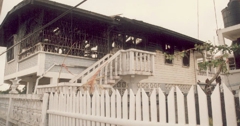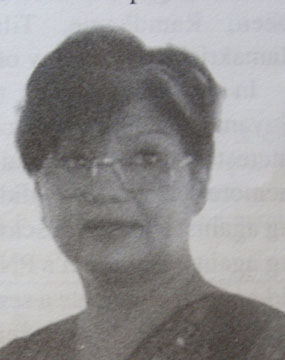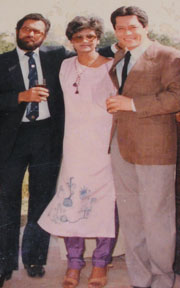| by Rakesh Rampertab |
See a small gallery of photos...
AS
a researcher, librarian, and cultural pioneer, Ms. Kallicharran’s
legacy has resulted in a sense of appreciation for the oral traditions
in Guyana, folklore culture, and the transportation of Indian
culture from the rural villages to the national stage. She promoted
shows, concerts, staged a one-woman exhibition on Indian indentureship
in 1980—the first ever held. There have been numerous books about
Indian heritage that she co-edited, such as They
Came in Ships, which celebrated the 150th anniversary of the arrivals
of Indians in Guyana. Then there were the many radio and TV programs
(e.g., “Caribbean Massala”) she produced and, of course, her grooming
of Guyana’s Chutney music into a national competition held during
Mashramani (albeit ceased now), which is now part of the annual
celebration of Indian Arrival day apart from being a recognized
art form. EQUALLY
admirable is the zest and sense of defiance to the expected roles
of women with which she etched out her work; as early as a teenager
growing up in Berbice, she drove her family’s car (a mini motor)
in a time when women, especially Indian women, were not accustomed
to such liberties, particularly if she was the daughter of a pandit.
Twice married and divorced, Ms. Kallicharran once credited her
feminine individuality to one of her grandmothers who lived alone
and fended for herself. As a librarian at the University of Guyana
(UG) and one who held a degree in sociology from UG, both her
academic qualification and job skills were funneled into extensive
historical research and projects that eventually led to benefits
for all Guyanese.
AT the least, I expect a memorial to be constructed in her name; I expect a street to be named after her (also for Mr. Andrew Murray, Guyana's Commonwealth and Latin America's ex-weltherweight boxing champ who died 2 days after Ms. Kallicharran in an auto accident in the midst of promoting a boxing match); I want future generations to ask about her. I want young Guyanese women to remember that the future is their to smash and recreate;that they ought not to be done in by a patriarchal order of society. I want this to be a tradition for our leaders and people who contribute enormously towards the development of our national cultures; there are, as it is, too many streets and villages named after people who were never Guyanese; Den Amstel, Vreed-en-Hoop...We have to change this now. BUT what good is public applause, a poem of praise, or the change of a street’s named to honor one? These are somewhat trivial matters; what matters is for one to recognize that the wheel of life spins on, that what has been will continue to be; Ms. Laxhmie Kallicharran is and isn’t, and that death by fire is not tragic at all, but fate fulfilling itself. Her work is done and her life spent. Now begins the work of those of us who have been slumbering, making the same excuses, speaking of the “need for changes” but neglecting the necessary actions. While belief is good, action crystallizes belief and changes the world for the better in a gentle way. There is too much babble among us Guyanese and less real action that ought to be. There is much work yet to be done to improve Guyanese culture and all its facets. I believe this is how we can best tribute Ms. Kallicharran; she would like it to be as such; no boundaries outside and those within to be altered as she has been transformed by fire. [Editor's Note: Bottom photo, Laxhmi Kallicharran in India, photo courtesy of Mr. Kampta Karran, a close friend of the late Ms. Kallicharran with whom she worked on a number of projects. On a more persoanl note, people ought to know that Ms. Kallicharran solicited funds to compile a book of photos of Indian indenture labourers, but her approaches to Indian businesses for money failed and so the photos remained in her home until they were consumed by the fire. Hopefully, this is a lesson from which Guyanese may learn.] |
| January 28, 2002 |
©
2001 Guyanaundersiege.com |


